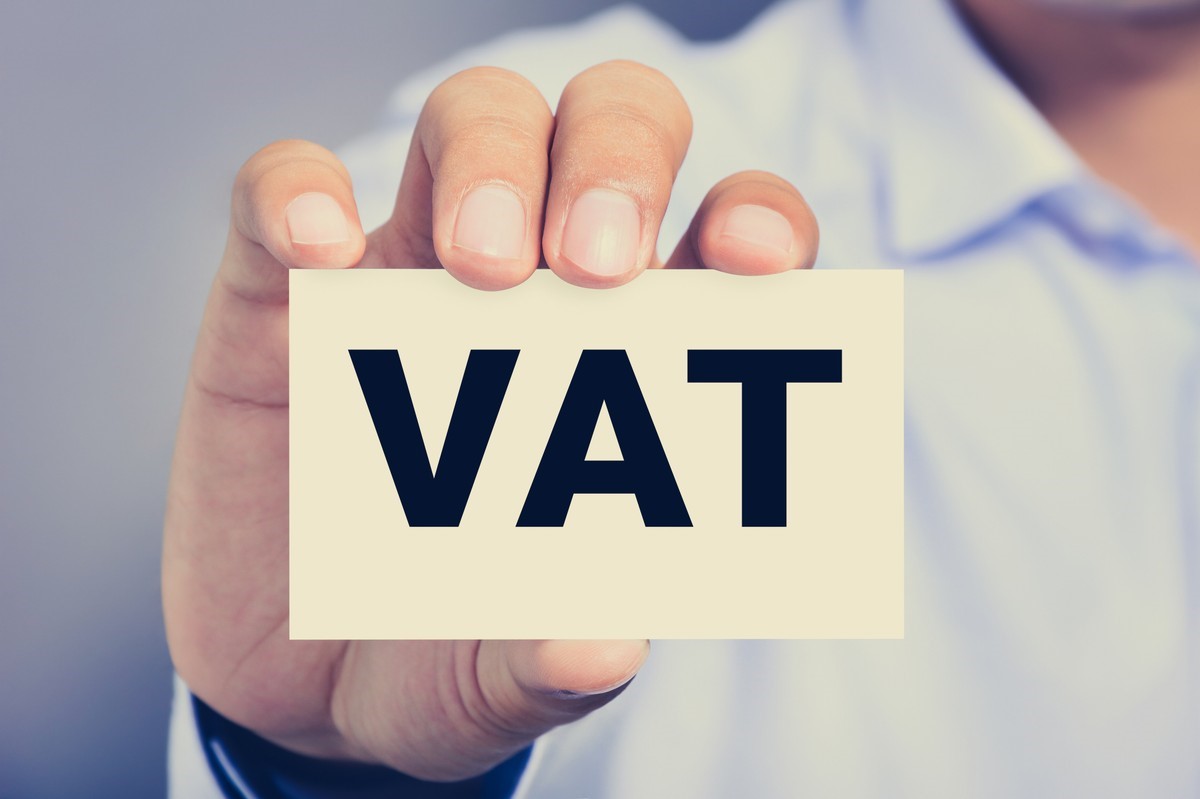Finance
The Impact of Cryptocurrency Regulations Benefits

Cryptocurrency has emerged as a revolutionary technology, reshaping the global financial landscape. However, the rapid expansion of digital currencies has raised concerns among governments, financial institutions, and investors alike. Cryptocurrency regulations, implemented worldwide, aim to balance innovation with stability, security, and compliance. In this article, we will explore the impact of cryptocurrency regulations, examining both their benefits and challenges, and analyze how different countries have responded to this evolving market.
1. Introduction to Cryptocurrency Regulations

Photo by André François McKenzie on Unsplash
Cryptocurrencies like Bitcoin, Ethereum, and other digital assets operate on decentralized blockchain technologies. This decentralization has raised concerns about the potential for financial crimes, including money laundering, tax evasion, and fraud. As a result, governments have implemented cryptocurrency regulations to oversee and manage these digital assets. These regulations aim to protect investors, ensure market integrity, and promote the safe use of blockchain technologies.
The development of these rules has had far-reaching implications for the crypto market and its participants, including exchanges, miners, and traders. The approach to cryptocurrency regulations varies by country, with some adopting more favorable stances while others have implemented stringent policies. Understanding these differences is crucial to comprehending the overall impact on the industry.
2. Positive Impacts of Cryptocurrency Regulations
2.1 Increased Market Confidence
One of the most significant benefits of cryptocurrency regulations is the increase in market confidence. Regulations provide investors with a sense of security, knowing that their investments are protected by legal frameworks. By establishing guidelines and compliance standards, governments ensure that crypto exchanges and platforms are accountable for their operations, reducing the risks of fraud and scams. As a result, regulations promote transparency and stability in the market, attracting more institutional and retail investors.
2.2 Prevention of Financial Crimes
Cryptocurrency regulations help combat financial crimes such as money laundering and terrorist financing. By enforcing Anti-Money Laundering (AML) and Know Your Customer (KYC) protocols, regulators ensure that participants in the crypto space are verified and their transactions can be traced. This reduces anonymity in crypto transactions, making it more challenging for criminals to exploit cryptocurrencies for illegal activities. As a result, well-regulated markets are safer and less susceptible to criminal exploitation.
2.3 Taxation and Revenue Generation
Another positive outcome of cryptocurrency regulations is the ability of governments to generate revenue through taxation. With clear regulations, cryptocurrencies can be treated as taxable assets, ensuring that governments can collect taxes on capital gains and profits earned from trading. This contributes to national revenue and ensures that the growing cryptocurrency market contributes its share to the economy.
3. Negative Impacts of Cryptocurrency Regulations
3.1 Stifling Innovation
Despite the benefits, some argue that excessive regulation can stifle innovation in the cryptocurrency space. Blockchain technology is still evolving, and over-regulation may deter startups and developers from experimenting with new applications. For example, stringent rules on Initial Coin Offerings (ICOs) have made it more difficult for new projects to raise funds, potentially slowing down innovation in decentralized finance (DeFi) and other blockchain sectors.
3.2 Increased Operational Costs
Regulations often impose compliance costs on businesses operating in the cryptocurrency industry. For crypto exchanges, implementing KYC/AML protocols, auditing procedures, and adhering to other regulatory requirements can be expensive. These costs are often passed down to users in the form of higher fees. Smaller companies and startups may struggle to meet these demands, potentially being pushed out of the market or forced to relocate to countries with more favorable regulatory environments.
3.3 Lack of Global Consistency
One of the main challenges in cryptocurrency regulation is the lack of consistency across different jurisdictions. While some countries, like Switzerland and Japan, have embraced cryptocurrencies with clear, favorable regulations, others, like China and India, have imposed strict restrictions or outright bans. This fragmented approach creates uncertainty for businesses and investors, who must navigate a patchwork of rules depending on where they operate. The absence of a global regulatory framework complicates cross-border transactions and can hinder the global adoption of cryptocurrencies.
4. Global Regulatory Approaches to Cryptocurrency
Countries across the world have adopted different strategies to regulate cryptocurrencies. Some have chosen to embrace the technology, while others remain cautious, focusing on limiting its use. Below, we analyze some of the key global approaches to cryptocurrency regulations.
4.1 United States
The U.S. has adopted a mixed approach to cryptocurrency regulations. Different regulatory bodies, such as the Securities and Exchange Commission (SEC) and the Commodity Futures Trading Commission (CFTC), oversee different aspects of the market. While the U.S. has not banned cryptocurrencies, the SEC has taken a firm stance on regulating ICOs, classifying many tokens as securities. This has led to a more cautious approach from companies wishing to enter the U.S. market.
4.2 European Union
The European Union (EU) is working on creating a unified regulatory framework for cryptocurrencies, known as the Markets in Crypto-Assets (MiCA) regulation. MiCA aims to provide legal clarity across all EU member states, promoting innovation while ensuring consumer protection. The EU’s approach reflects a balanced attempt to regulate the market without stifling its potential for growth.
4.3 China
China has taken one of the most stringent approaches to cryptocurrency regulations. The country has banned all cryptocurrency transactions and mining activities, citing concerns about financial stability and energy consumption. While China initially played a significant role in the global crypto market, its harsh stance has forced many crypto-related businesses to move operations abroad.
4.4 Japan
Japan is one of the most progressive nations when it comes to cryptocurrency regulations. The country has recognized Bitcoin as a legal payment method and established clear regulations for crypto exchanges. Japan’s forward-thinking approach has made it a hub for blockchain and cryptocurrency development.
5. The Future of Cryptocurrency Regulations
As the cryptocurrency market continues to evolve, so too will the regulatory landscape. The future of cryptocurrency regulations will likely involve striking a balance between innovation and security. Governments and regulatory bodies will need to work together to create global standards that foster transparency, while still encouraging technological advancement. In the coming years, we may see more coordinated efforts among countries to create consistent regulations that apply across borders, making it easier for cryptocurrencies to gain widespread acceptance.
Emerging technologies such as Decentralized Autonomous Organizations (DAOs) and decentralized finance (DeFi) platforms also pose new regulatory challenges. Regulators will need to adapt to these changes, finding ways to ensure that innovation can continue without compromising consumer protection or financial stability.
6. Analysis of the Impact of Cryptocurrency Regulations
| Impact Area | Positive Impact | Negative Impact |
|---|---|---|
| Market Confidence | Regulations boost confidence by ensuring transparency and legal protection. | Over-regulation may cause confusion and deter participants. |
| Financial Crime Prevention | Reduces risk of money laundering and illicit transactions. | May limit privacy for users who value anonymity. |
| Innovation | Creates a safer environment for investors and consumers. | Overly strict rules may stifle new projects and technologies. |
| Operational Costs | Encourages better financial compliance. | Increases costs for businesses and startups. |
| Global Consistency | Countries with clear regulations attract investment. | Lack of global standardization creates uncertainty. |
7. Comparative Table: Country Approaches to Cryptocurrency Regulations
| Country | Approach | Regulatory Stance | Impact on Market |
|---|---|---|---|
| United States | Mixed regulation by different agencies (SEC, CFTC). | Cautious; ICOs treated as securities. | High regulation creates barriers for new entrants. |
| European Union | Working on unified MiCA regulation. | Balanced; promotes innovation while ensuring consumer protection. | Provides legal clarity for crypto businesses. |
| China | Strict ban on cryptocurrency transactions and mining. | Very restrictive; crypto use is prohibited. | Led to mass exodus of crypto-related businesses. |
| Japan | Recognizes Bitcoin as a legal payment method. | Progressive; clear and favorable regulations. | Japan is a hub for blockchain and crypto activity. |
Conclusion
Cryptocurrency regulations play a pivotal role in shaping the future of the digital asset industry. While regulations provide much-needed security and transparency, they can also hinder innovation if not carefully designed. The global regulatory landscape is complex, with countries adopting vastly different approaches, ranging from outright bans to progressive acceptance. As the market matures, global cooperation and clear, balanced regulations will be key to ensuring the long-term sustainability of cryptocurrencies.
Finance
Capital Asset Scheme UAE VAT: What Businesses Need to Know
Business
7 Key Advantages of Choosing AIMS for Your Islamic Banking Journey

Introduction
The global economy is witnessing a paradigm shift as ethical finance and Islamic banking gain prominence. For students and professionals eager to venture into this dynamic field, acquiring the right qualifications is essential. AIMS Education positions itself as a premier institution offering cutting-edge certifications in Islamic banking, tailored to both beginners and experienced professionals. Whether you are passionate about ideological alignment, financial innovation, or professional growth, AIMS delivers a comprehensive educational experience designed to meet market demands.
Why Islamic Banking Education Matters
Islamic banking provides innovative solutions rooted in ethical principles and centuries-old traditions. With estimates projecting the global Islamic finance industry to exceed $3 trillion by 2025, qualified professionals will be in high demand. Pursuing accredited and practical learning programs, like those offered by AIMS, ensures you’re not only part of this transformation but also positioned to lead it.
When considering a career in Islamic banking, selecting the right educational partner is crucial. Islamic banking is growing rapidly as more businesses, governments, and financial institutions adopt Sharia-compliant practices. Whether you’re a seasoned finance professional or an aspiring student seeking to make your mark, Accredited Institute of Management Studies (AIMS) offers unparalleled opportunities to enhance your expertise through globally recognized Islamic banking courses. Here, we explore the 7 key advantages of choosing AIMS for your Islamic banking education and career development.
7 Key Advantages of Choosing AIMS for Islamic Banking
1. Flexibility and Accessibility for Global Learners
One of the standout features of AIMS is its flexibility for students and professionals around the world. Their Islamic banking courses, including certifications, diplomas, and advanced programs, are designed for online learning. Whether you’re juggling work, family, or other commitments, the platform’s accessible structure allows you to study at your own pace, anytime, anywhere.
- Courses are fully online, removing the need for travel or physical attendance.
- Perfect for students seeking affordable, high-quality education on a global scale.
- Detailed video tutorials, guided readings, and discussion forums foster an immersive learning experience.
These flexible options ensure that international students and working professionals alike can seamlessly integrate learning into their busy lives.
2. Enhanced Career Opportunities and Professional Development
Gaining Islamic banking expertise from an accredited institution signifies professionalism and credibility. The certifications offered by AIMS open doors to diverse financial roles, including those in Islamic banking, insurance (takaful), investment, and asset management.
- Graduates often land lucrative opportunities in multinational banks and financial firms.
- Certification boosts your resume and marketability in a competitive job environment.
- Programs are tailored to equip learners with practical knowledge and job-ready skills.
AIMS ensures learners gain actionable insights, enabling them to excel in real-world scenarios.
3. Comprehensive and Accredited Programs
Accreditation stands as a hallmark of quality in education. AIMS courses are vetted and certified by global accreditation bodies, enhancing the credibility of its programs. The certifications also receive wide acceptance by employers, universities, and industry associations.
- Accreditation guarantees that content aligns with international standards.
- Employers recognize AIMS graduates as highly skilled and professionally certified.
- Continuous updates ensure students learn the most relevant practices, preparing them for evolving challenges within Islamic banking.
By undertaking AIMS programs, you gain not just education but also credibility in the job market.
4. Bridging Theory and Practical Application
Islamic banking isn’t just about understanding theory; it’s about applying those principles in today’s global financial ecosystem. AIMS engages learners with real-world case studies, simulations, and exposure to contemporary practices. Topics such as the mudaraba meaning as a profit-sharing agreement in Islamic economic structures and Islamic leasing (Ijarah thumma al-bay’) take center stage. Through engaging coursework, students graduate ready to bridge the gap between theoretical concepts and practical execution.
Programs place a strong emphasis on the mudarabah principle in Islamic business partnerships, enabling students to structure Sharia-compliant business agreements with confidence. This holistic approach ensures you graduate with the ability to solve real-world financial challenges ethically and efficiently.
5. Real-World Success Stories
AIMS’s impact can be best understood through the eyes of its alumni, who have successfully transitioned into thriving careers in the Islamic finance sector.
- Fatima L., UAE: A working professional managing a family business, Fatima completed the Advanced Diploma in Islamic Banking. The international recognition of her qualification allowed her to secure partnerships with major Islamic financial institutions.
- Ahmed S., UK: After earning an Islamic Banking Certification with AIMS, Ahmed was promoted to lead the Islamic banking division at a multinational bank. He credits the program’s case-study-driven approach for giving him the knowledge to lead confidently.
- Sara K., Malaysia: A newcomer to finance, Sara found AIMS’s beginner-friendly programs to be the perfect start. She now works as a middle-manager focusing on Sharia-compliance auditing.
Real stories like these demonstrate how AIMS transforms education into tangible returns for its students and alumni.
6. Relevance in the Current Job Market
The demand for Islamic banking professionals continues to rise as ethical finance expands globally. AIMS tailors its courses to meet these demands head-on. Graduating with an AIMS certificate ensures you’re perfectly positioned to secure roles in this lucrative field.
Islamic banking professionals can expect salaries 20% higher than their non-specialized counterparts.
Key skills such as Sharia-compliance auditing, risk assessment, and financial structuring are actively sought by employers in the sector.
Furthermore, the knowledge gained through certifications such as the Certified Islamic Banker (CIB) and other Islamic banking courses for beginners and working professionals in finance is directly applicable to roles in banking operations, investment management, and financial advisory services.
Conclusion
With its accredited programs, flexible learning options, and focus on real-world applications, AIMS stands out as the ideal choice for anyone aiming to excel in Islamic banking. The institute’s efforts to integrate theoretical understanding with practical knowledge ensure that graduates are career-ready and highly valued in the competitive global job market. Take the next step in your Islamic banking career by enrolling in AIMS courses. Explore the opportunities here and transform your future today!
7. FAQs About AIMS and Islamic Banking Education
Here are answers to some common questions about pursuing education with AIMS:
Q.1 Who can enroll in Islamic banking courses?
AIMS welcomes students and professionals globally, whether beginners or experienced finance workers.
Q.2 How long does it take to complete a course?
Depending on the course, completion can range from a few weeks to several months.
Q.3 Are degrees or certifications recognized internationally?
Yes, all AIMS certifications are accredited and widely respected in the financial industry.
Q.4 Can I balance work and study?
Absolutely. AIMS programs are designed with the flexibility to accommodate busy schedules.
Q.5 Are there specific career prospects after AIMS courses?
AIMS graduates often secure roles in Islamic finance, banking, and investment, and some assume leadership positions.
Finance
Must-Have Insurance Types Every Family Needs for Protection

Introduction
Life is full of surprises—some bring joy, others present challenges. As a parent or partner, you want to protect your family from financial hardship if the unexpected occurs. The right insurance policies provide a safety net, ensuring that medical bills, home repairs, or loss of income don’t derail your loved ones’ future. In this guide, we’ll explore the must-have types of insurance every family needs. You’ll learn how each policy works, why it matters, and tips for choosing the best coverage. By the end, you’ll have a clear roadmap to safeguarding your family’s health, home, and finances.
Must-Have Insurance Types Every Family Needs for Protection
1. Health Insurance
Why It Matters
Medical costs in many countries can be astronomical. Health insurance covers doctor visits, hospital stays, surgeries, and prescription drugs. Without it, a single serious illness or injury can wipe out savings.
Key Coverage Components
- Inpatient Care: Hospital room, surgery, and nursing fees.
- Outpatient Care: Doctor office visits, lab tests, and specialist consultations.
- Prescription Drugs: Generic and brand-name medications.
- Preventive Services: Vaccinations, screenings, and wellness checkups.
Tips for Choosing a Plan
- Compare premium versus deductible: lower premiums often mean higher out-of-pocket costs.
- Check the network of doctors and hospitals.
- Review co-pay and co-insurance percentages for specialist care.
2. Life Insurance
Why It Matters
If you pass away unexpectedly, life insurance provides a lump-sum payment to your beneficiaries. This money can cover funeral costs, debt repayment, mortgage payments, and future living expenses.
Types of Life Insurance
- Term Life: Coverage for a fixed period (10, 20, or 30 years). More affordable, ideal for young families paying off a mortgage.
- Whole Life: Lifetime coverage with a cash-value component that grows over time—higher premiums but permanent protection.
- Universal Life: Flexible premiums and death benefits, plus a cash-value account tied to interest rates.
Tips for Choosing a Policy
- Calculate the coverage amount: 10–15 times your annual income is a common rule of thumb.
- Choose the right term length to match your financial obligations (e.g., until kids graduate college).
- Compare quotes from multiple insurers to find the best rate.
3. Disability Insurance
Why It Matters
A serious injury or illness that prevents you from working can quickly deplete savings. Disability insurance replaces part of your income—typically 60–70%—if you can’t work due to disability.
Types of Disability Insurance
- Short-Term Disability: Pays benefits for 3–6 months following a waiting period of 14–30 days.
- Long-Term Disability: Kicks in after short-term coverage ends, providing benefits for years or until retirement age.
Tips for Choosing a Policy
- Look for policies that cover own-occupation disability: you’re covered if you can’t perform your specific job.
- Consider the elimination period: shorter waits mean higher premiums.
- Ensure the benefit period matches your needs—longer periods offer greater security.
4. Homeowners or Renters Insurance
Why It Matters
Your home is likely your family’s biggest asset. Insurance protects against damage from fire, storms, theft, and liability if someone is injured on your property. Renters insurance covers personal belongings and liability in a rented home or apartment.
Key Coverage Components
- Dwelling Coverage: Repairs to your home’s structure after a covered peril.
- Personal Property: Reimbursement for furniture, electronics, and clothing.
- Liability Protection: Legal fees and medical payments if a guest is hurt on your property.
- Additional Living Expenses: Hotel bills and meals if you’re displaced during repairs.
Tips for Choosing a Plan
- Have your home appraised or do a detailed home inventory to set adequate coverage limits.
- Check for discounts—bundling home and auto policies can lower premiums.
- Review exclusions, like floods or earthquakes, which often require separate policies.
5. Auto Insurance
Why It Matters
Car accidents can result in expensive repairs, medical bills, and liability claims. Auto insurance covers these costs and may be legally required in your area.
Key Coverage Components
- Liability: Covers bodily injury and property damage you cause to others.
- Collision: Pays for repairs to your vehicle after an accident.
- Comprehensive: Covers non-collision damage—vandalism, theft, or natural disasters.
- Uninsured/Underinsured Motorist: Protects you if another driver lacks sufficient coverage.
Tips for Choosing a Plan
- Compare deductibles: higher deductibles lower premiums but increase out-of-pocket costs in a claim.
- Check for safe driver and multi-car discounts.
- Review customer service ratings and claims processing times.
6. Umbrella Insurance
Why It Matters
An umbrella policy provides extra liability coverage beyond your home and auto limits—typically up to $1–5 million. This protects your assets if you’re sued for damages exceeding your standard policies.
Who Needs It?
- Families with significant assets or high net worth.
- Homeowners with a pool or trampoline—higher accident risk.
- Professionals who could face lawsuits (e.g., lawyers, doctors).
Tips for Choosing a Policy
- You usually need underlying liability limits of at least $250,000 on auto and home policies.
- Compare premium rates and coverage limits.
- Ensure your policy covers legal defense costs.
7. Critical Illness Insurance
Why It Matters
Life-threatening diseases cancer, stroke, heart attack carry high treatment costs and lost income. Critical illness insurance pays a lump sum upon diagnosis to cover medical expenses, mortgage payments, or experimental treatments.
Key Features
- Fixed Benefit Amount: You choose coverage level—often ranging from $20,000 to $100,000 or more.
- Payout on Diagnosis: Funds disbursed quickly to cover urgent needs.
- Survival Period: Some policies require you to survive 30 days after diagnosis to qualify for the payout.
Tips for Choosing a Policy
- Review the list of covered illnesses; some policies cover dozens of conditions, others only a few.
- Compare exclusions and waiting periods.
- Coordinate benefits with your health insurance to avoid overlap.
8. Long-Term Care Insurance
Why It Matters
As parents and grandparents age, they may need help with daily activities—bathing, dressing, or mobility. Long-term care insurance pays for assisted living, nursing home care, or in-home care, preserving family savings and relieving caregiving burdens.
Key Features
- Daily Benefit Amount: Covering $100–$300 per day for care services.
- Benefit Period: Payable for 2–5 years or lifetime, depending on the plan.
- Inflation Protection: Automatic increases in benefits to keep pace with rising care costs.
Tips for Choosing a Policy
- Buy early—premiums rise significantly after age 60.
- Choose a policy with a short elimination period (30–90 days) for faster payouts.
- Evaluate your family’s history of chronic illness to estimate care needs.
9. Travel Insurance
Why It Matters
Whether a family vacation or business trip, travel insurance covers trip cancellations, medical emergencies abroad, lost luggage, and travel delays.
Key Features
- Trip Cancellation/Interruption: Reimburses non-refundable trip costs due to covered reasons.
- Emergency Medical: Pays for hospital stays and evacuations overseas.
- Baggage Loss/Delay: Compensates for lost or delayed luggage.
- Travel Delay: Covers additional lodging and meals if your trip is delayed by more than a set number of hours.
Tips for Choosing a Policy
- Read covered reasons and exclusions carefully.
- Consider annual multi-trip plans for frequent travelers.
- Check if existing health insurance covers international emergencies.
10. Pet Insurance
Why It Matters
Veterinary bills for accidents or illnesses can add up fast. Pet insurance covers treatments, surgeries, and prescriptions, ensuring your furry family members get the care they need without breaking the bank.
Key Coverage Types
- Accident-Only Plans: Lower premiums, cover injuries from accidents.
- Accident & Illness Plans: Broader coverage, including diseases like diabetes and cancer.
- Wellness Add-Ons: Routine care for vaccinations and dental cleanings.
Tips for Choosing a Policy
- Enroll young—pre-existing conditions are generally excluded.
- Compare annual limits and deductible levels.
- Check reimbursement rates (e.g., 70%, 80%, or 90%).
Conclusion
Protecting your family requires a well-rounded insurance portfolio. Health insurance keeps medical costs manageable, while life and disability insurance safeguard income and loved ones’ futures. Homeowners, auto, and umbrella policies shield your property and assets. Critical illness and long-term care insurance prepare you for life’s toughest health challenges. Don’t forget travel and pet insurance for comprehensive coverage. By choosing the right mix of these must-have insurance types, you ensure your loved ones are financially secure and stress-free, no matter what life brings.
-
Business2 years ago
Cybersecurity Consulting Company SequelNet Provides Critical IT Support Services to Medical Billing Firm, Medical Optimum
-
Business2 years ago
Team Communication Software Transforms Operations at Finance Innovate
-
Business2 years ago
Project Management Tool Transforms Long Island Business
-
Business2 years ago
How Alleviate Poverty Utilized IPPBX’s All-in-One Solution to Transform Lives in New York City
-
health2 years ago
Breast Cancer: The Imperative Role of Mammograms in Screening and Early Detection
-
Sports2 years ago
Unstoppable Collaboration: D.C.’s Citi Open and Silicon Valley Classic Unite to Propel Women’s Tennis to New Heights
-
Art /Entertainment2 years ago
Embracing Renewal: Sizdabedar Celebrations Unite Iranians in New York’s Eisenhower Park
-
Finance2 years ago
The Benefits of Starting a Side Hustle for Financial Freedom































